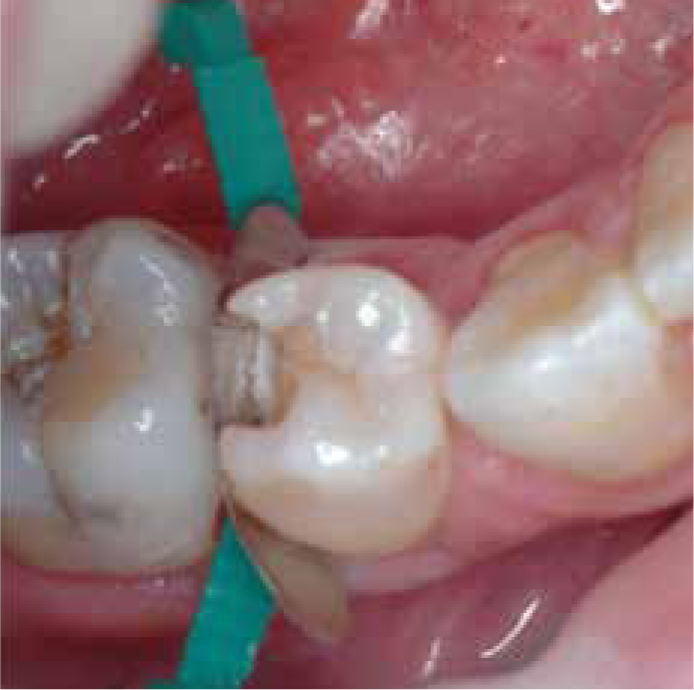Article
Tooth-coloured restorations in posterior teeth are becoming increasingly popular, with the results of a survey of 1,000 UK dentists in 2002 and 2008 indicating a decline from 86%1 to 59%2 of restorations in posterior teeth formed in amalgam, with restorations formed in resin composite increasing accordingly. However, early in the posterior composite era, results in a clinical trial of amalgam vs composite, organized at the University of Liverpool, indicated 2.5 times more defective contact points with composite restorations than with amalgam.3 The Siqveland matrix band was likely to be the villain of the piece here because it was frequently used with amalgam restorations, and clinicians of that time (myself among them!) thought that it would also be suitable for composite restorations. This was not the case, because the amalgam forces matrices of this type out in a way that cannot be achieved with composite.
So, what is the cost of a defective contact point, notwithstanding the potential for damage to the periodontal tissues by the interproximal food impaction? First, there is an emergency attendance (10 minutes, perhaps?), possibly with a disgruntled patient, and then a further appointment (45 minutes perhaps – depending on the size and complexity of the restoration) to replace the defective restoration with one with a firm contact point. Readers can work out the cost according to their hourly rate, but I would suggest that the minimum is £100!
So, how does the clinician achieve a satisfactory contact point in the first place, with the ideal being shown in Figure 1?

First, throw away any celluloid Class II matrices: in the author's opinion, these are not stiff enough to get through a tight contact.
Secondly, for the small to average width Class II box, use a sectional matrix. There are many examples of these on the market, with the Garrison range (available in the UK from Optident) being an example (Figure 2). There is a reasonable body of research indicating their effectiveness, among them the papers referenced in references 4 and 5.

Thirdly, the author has been using Supermat (Kerr, Orange, CA, US) with success for over a decade and recommends this for use in the wider box, a mesio-occlusal-distal cavity or a cusp replacement, although he is unaware of any published research into its effectiveness. The matrices with the yellow centre (indicating Siqveland thickness of 0.05 mm) and a green outside (indicating molar height) are the most versatile (Figure 3). The handle needed to tighten the matrix is autoclavable.

Lastly, none of these matrices should be used without tightly applied wedges. A bitine ring may also be used with the sectional types to retain the matrix and to achieve some separation from the adjacent tooth, but should not be used without rubber dam in place because of the risk of it springing off and then being swallowed or inhaled by the patient. It should also be noted that all matrices should be treated as disposable, given the potential for matrices and their holders to be contaminated, even after cleaning and autoclaving.6
Disposing of them also saves time, at least when compared with the time needed to replace a Siqveland matrix in the holder. Contact formers, such as the Garrison Perform, may also be of value.
Given the number of matrix systems currently available, readers are invited to write to Dental Update with their experience of alternative systems.
